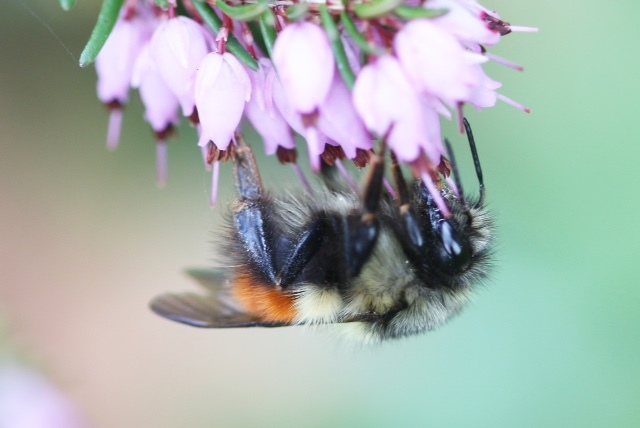It takes much more than landing on a flower to be a pollinator.
Christopher Looney, entomologist for the Washington State Department of Agriculture, explained this and more during his “Bumbleblitz” talk hosted by the San Juan County Land Bank at the library, April 29.
“The hair on bumble bees are split, like feathers, and therefore captures more pollen,” Looney said, giving one example why bees are more effective than other insects, which have solid hairs thus less of an ability to pollinate.
Bumble bees have always been important pollinators. They are used commercially in greenhouses all around the country, according to Looney, but in the 1990s a massive decline in bees was noticed, especially in the Bombus Occidentalis population, which was once the most common bumble bee in the Pacific Northwest. Currently, scientists believe disease, like a bumble bee fungus that may have been transmitted via transporting Occidentalis for commercial reasons, seems to be the primary cause of their dwindling numbers. Other factors like habitat loss and pesticides may also play a role, he notes. Since the fungal outbreak, some scientists and media outlets say there has been a rebound in the Bombus Occidentalis population, but Looney disagrees.
“There are no large populations of Bombus Occidentalis in Washington anymore. Alaska is the only state that still has a one,” he said.
San Juan County has the right combination of climate, elevation and habitat for up to 17 species of Bombus, or bumble bees, however realistically Looney said, there is probably more like 13. It is difficult to tell due to the fact that many species look very similar. It doesn’t help that bumble bees are very protective of their nests.
“Have you ever tried to find one?” Looney asked. “It’s tricky. They land first and actually walk several feet to get to their nest.”
There have been multiple, and conflicting, studies done, Looney said, out of concern of losing these major pollinators.
“Some studies show pesticides cause significant damage to bees, others show they don’t,” said Looney. “Part of the issue may be a disconnect between lab and field studies. We need better chemical management.” He added that pesticides are used 10 times more in individual homes than by large commercial farms. Depending on what kind and how it is used, pesticides may not be entirely harmful, he said, “Personally though, I use vinegar.”
Of most concern to Looney is habitat loss, which he believes is something anyone can help with, although it will take a shift in perspective.
“We need to challenge the way we view lawns,” Looney said, showing a photo of a mass of flowers, as opposed to grass, in front of a home.



